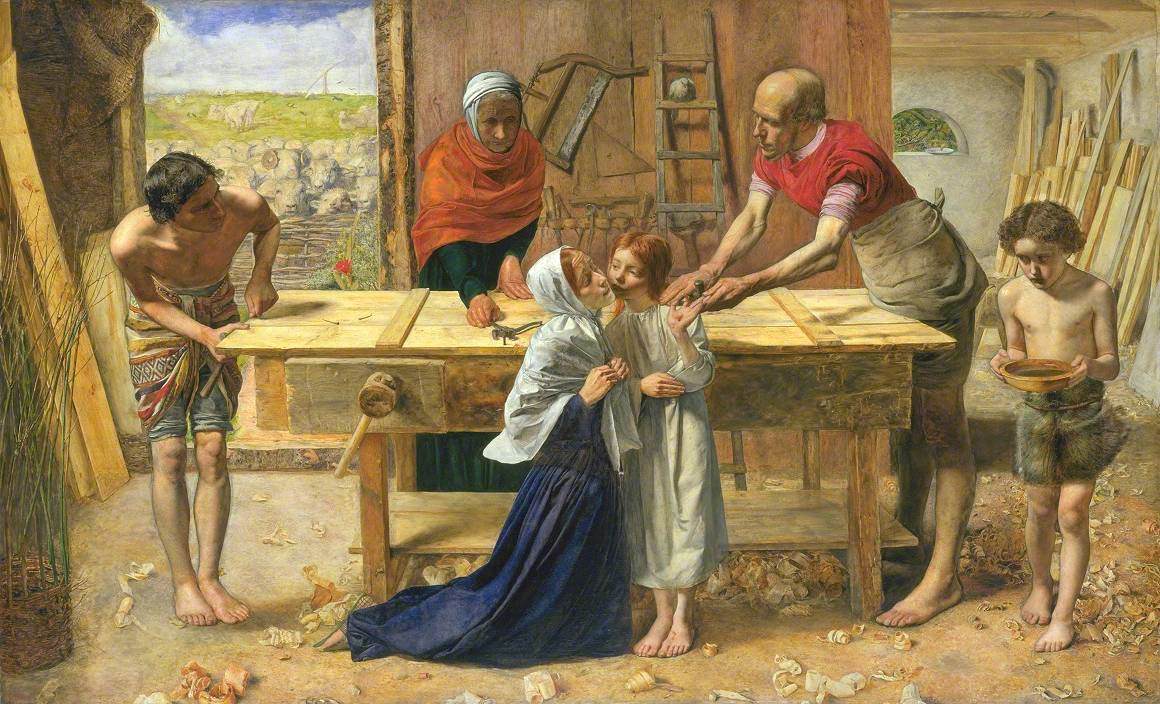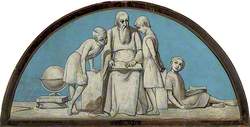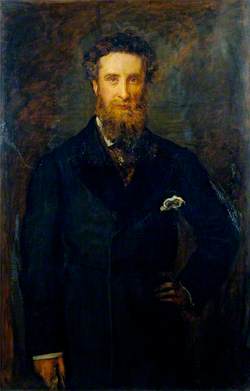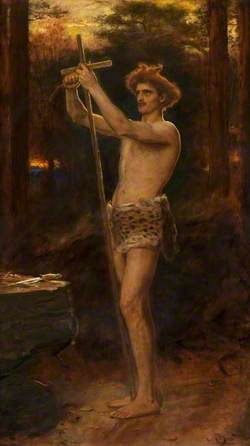How you can use this image
This image is available to be shared and re-used under the terms of the Creative Commons Attribution-NonCommercial-NoDerivatives licence (CC BY-NC-ND).
You can reproduce this image for non-commercial purposes and you are not able to change or modify it in any way.
Wherever you reproduce the image you must attribute the original creators (acknowledge the original artist(s) and the person/organisation that took the photograph of the work) and any other rights holders.
Review our guidance pages which explain how you can reuse images, how to credit an image and how to find more images in the public domain or with a Creative Commons licence available.
DownloadNotes
Add or edit a note on this artwork that only you can see. You can find notes again by going to the ‘Notes’ section of your account.
This is Millais's first important religious subject, showing a scene from the boyhood of Christ. When it was exhibited at the Royal Academy in 1850 it was given no title, but accompanied by a biblical quotation: 'And one shall say unto him, What are those wounds in thine hands? Then he shall answer, Those with which I was wounded in the house of my friends.' (Zech. 13:6) Christian symbolism figures prominently in the picture. The carpenter's triangle on the wall, above Christ's head, symbolises the Holy Trinity. The wood and nails prefigure the crucifixion, as does the blood on the young Christ's hand, which he has cut on a nail, and which drips onto his foot. The young St John is shown fetching a bowl of water with which to bathe the wound. This clearly identifies him as the Baptist, and the image is extended by the white dove perched on the ladder, symbol of the Holy Spirit, which descended from Heaven at the baptism of Christ.
The public reaction to the picture was one of horror and Millais was viciously attacked by the press. The Times described the painting as 'revolting' and objected to the way in which the artist had dared to depict the Holy Family as ordinary, lowly people in a humble carpenter's shop 'with no conceivable omission of misery, of dirt, of even disease, all finished with the same loathsome minuteness'. Charles Dickens was one of the most vehement critics, describing the young Christ as 'a hideous, wry-necked, blubbering, red-headed boy, in a bed gown' ('Household Words', 15 June 1850).
Further reading: Leslie Parris (ed.), 'The Pre-Raphaelites', exhibition catalogue, Tate Gallery, London 1984, reprinted 1994, pp.77–79, reproduced p.79, in colour. Elizabeth Prettjohn, 'The Art of the Pre-Raphaelites', London 2000, pp.189–191, reproduced pp.46–47, in colour. Malcolm Warner, 'The Victorians – British Painting 1837–1901', exhibition catalogue, National Gallery of Art, Washington, 1997, pp.65–66, reproduced pl.17, in colour. Frances Fowle December 2000
Title
Christ in the House of His Parents ('The Carpenter's Shop')
Date
1849–50
Medium
Oil on canvas
Measurements
H 86.4 x W 139.7 cm
Accession number
N03584
Acquisition method
Purchased with the assistance of the Art Fund and various subscribers 1921
Work type
Painting
Inscription description
date inscribed









